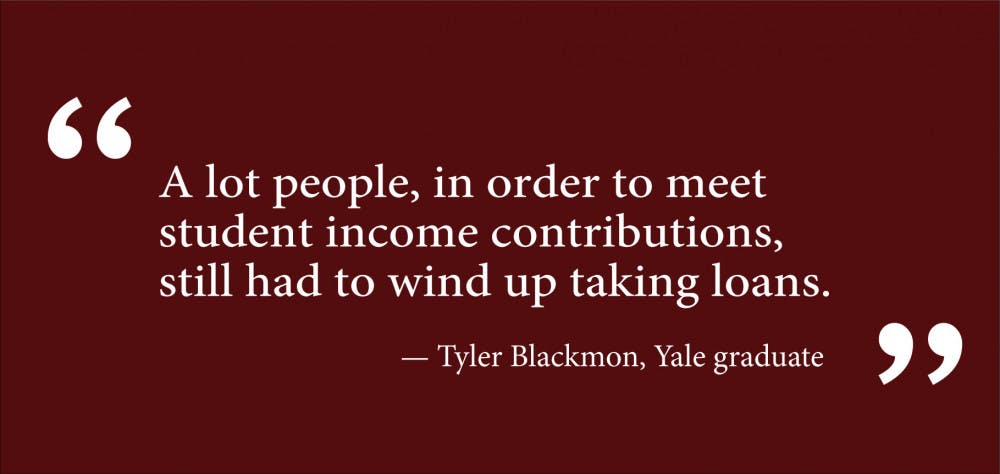In 2002, the University made a promise to become need-blind. Fifteen years later, the University is renewing its promise by eliminating loans from all undergraduate financial aid packages with the “Brown Promise” campaign.
The University is not the first of its peers to implement such a policy. Princeton was the first to eliminate loans from its package in 2001, and has since been joined by Harvard, Yale, Stanford University, Columbia and Penn.
Implementing such a policy “takes some time,” said Dean of Financial Aid Jim Tilton. “There are lots of different things that institutions have to take into account with regards to priorities.”
Though the promise has been received with excitement by students, other campuses have faced criticism after the implementation of similar policies.
Yale announced its “no-loan” policy in 2008, but has faced backlash as many students still graduate with debt, despite not having loans in their packages. Tyler Blackmon, a Yale alum who wrote a column branding Yale’s no-loan policy a lie, said he still had to take out loans. “What we learned once the policy was in place is that it’s only true on paper,” Blackmon told The Herald. “A lot of people, in order to meet student income contributions, still had to wind up taking loans.”
“Brown Promise” does not guarantee that students will not have to take out loans, but guarantees that financial aid packages will not contain loans, Tilton said.
“Families choose to finance their college education in a number of ways,” Tilton said. “Students may decide to help out their parent contribution by taking out a loan. But at least they’re not starting with one in their package. … They now have a choice that starts with no loans.”
“I would really reject that (framework) of this being a choice of a student,” Blackmon said. “No student chooses to take out a loan.”
Penn, which initiated eliminating loans in 2008, faced similar criticism. Originally called a “no-loan” policy, Penn ended up renaming the policy “all-grant.” Most recently, Penn changed its policy to a “grant-based” policy.
“Even though it was a no-loan policy from Penn’s angle,” some students had to take out loans “because they didn’t feel like Penn was meeting their full financial aid,” said Vibha Kannan, a Penn student who has covered financial aid for the Daily Pennsylvanian. This “is what sparked Penn to reconsider a little bit,” she added.
“Brown Promise” has not explicitly named its policy “no-loan,” and Tilton believes the terms of the policy are unambiguous. “We’ve been pretty clear about replacing packaged loans,” Tilton said. “We’ve put a link on our website to explain the ‘Brown Promise’ so students know specifically what loans are addressed in the promise.”
Since eliminating loans from financial aid packages, Penn’s average student debt has decreased, but not disappeared. For Brown’s class of 2017, students borrowed an average of $25,388 and 33 percent of the class ended up borrowing money, Tilton said. Mark Kantrowitz, financial aid expert, vice president of strategy and publisher for Cappex, a college help website, expects these numbers to decrease “fairly significantly” if “Brown Promise” is implemented.
However, universities can never fully eliminate loans since students will always have the choice to borrow, Kantrowitz said. Some students may decide to take out loans “when it really isn’t a necessity.”
To help decrease the amounts of loans, universities need to educate students on borrowing. “Colleges that have adopted aggressive counseling programs … have seen significant reductions in the number of students borrowing and the average amount of debt,” Kantrowitz said. “So if you couple a no-loans financial aid policy with increasing awareness of the consequences of debt and increasing priority of the information about student loans, you’re going to see smarter borrowing choices by these students.”
Ultimately, despite criticism of the policy at their respective schools, Kannan and Blackmon agree that a policy that eliminates loans is still a positive change.
“This is definitely a positive thing,” though people need to consider the “subtle nuance” of the way schools brand their financial aid policy, Kannan said.
“This is a good step in the right direction,” Blackmon said, adding that the University needs to be careful on how it frames it in the future.





